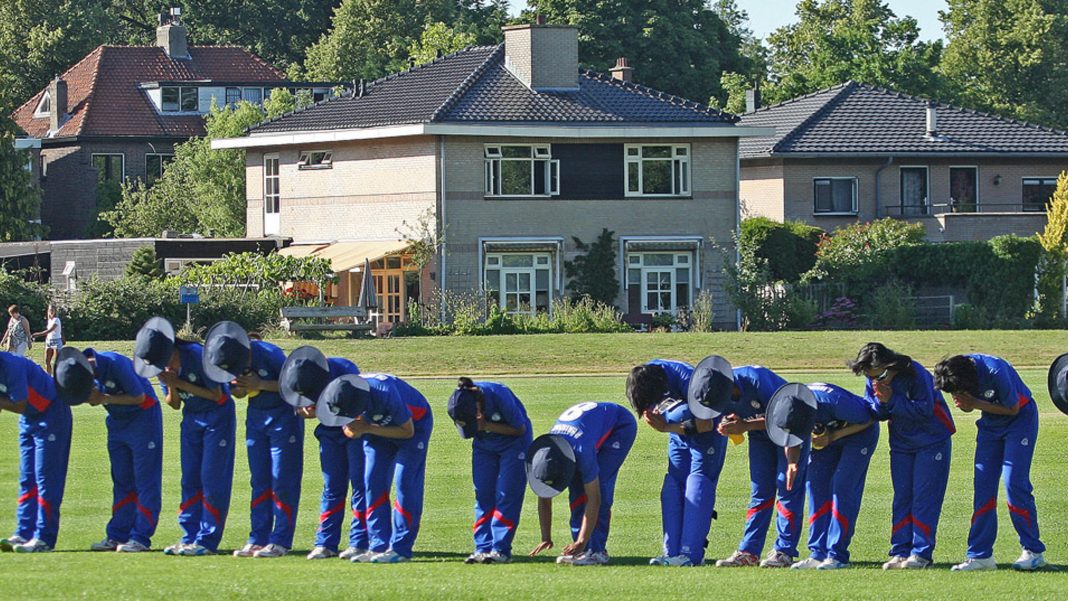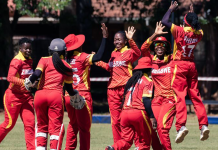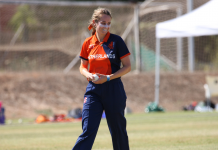The walls of the players’ dining rooms at the WACA are adorned with photographs of the West Australian greats. On the afternoon of the Thailand cricket team’s T20 World Cup debut against the West Indies, I found myself pausing to look at these portraits. I remember puzzling over why Geoff and Mitchell Marsh were present, but not Shaun, before quickly realizing that I was looking at Western Australia’s captains.
The team’s physiotherapist joined me.
“Who are they?” he asked.
“Some of Australia’s most famous players,” I replied.
“These two guys are father and son,” I continued, pointing first at Geoff and then at Mitchell.
“Oh, I guess they look alike,” he said, turning and walking purposefully into the dressing room.
He was in the midst of preparing the players for their maiden World Cup appearance. But even in the heat of that moment, his disinterest struck me.
I thought back on my own reaction to the East Torrens Cricket Club premiership history, plastered in photos and words on the dressing room walls of Campbelltown Memorial Oval in Adelaide. We had visited a few days earlier to run a ‘Cricket for Good’ clinic with a group of school children.
Incidentally, a day before Thailand’s debut in Perth, the team had received a letter from the children and their parents. The kids were so taken with the team’s enthusiasm and warmth at the clinic that they had written to wish the players good luck. They also declared their tournament allegiance to Thailand.
Thinking back to the East Torrens dressing room walls, I remember acknowledging the images and words depicting these meaningful club victories, but moving on quickly. I had no reference point, affinity or knowledge of the Club. This was a distant history.
It struck me that many of team’s players and officials would likely feel the same distance to the WACA, and its history.
Perhaps the ground’s history and tradition would not clutter the players’ minds that afternoon. They knew the pitch was quick and bouncy, but they were unlikely to be burdened by the WACA’s reputation as a playground for the fastest and fieriest in the sport. They could not picture Dennis Lillee, Courtney Walsh, Brett Lee, or Mitchell Johnson steaming in to bowl the first ball at a WACA Test match, Fremantle Doctor in full flow. Similarly the batters could not visualize a set Langer, Hayden, or Tendulkar cutting or pulling bowling attacks into oblivion on a more placid day two wicket.
Some of the younger Thai players had never even heard of the WACA before the tournament.
Much of this has to do with the fact that cricket has never been broadcast live on television or radio in Thailand. Most people in Thailand have never heard of the sport. Very few understand the significance of a Thai women’s national team qualifying for a ten-team World Cup.
Although the players now watch plenty of live cricket and old footage online, the television imagery that embeds itself into the mind of a child growing up in a Test-playing country does not exist in Thailand. It is through these images and the memories that accompany them, that grounds like the WACA acquire an aura, or even a pedestal, in the mind of a debutant.
Whereas some players knew and idolized competitors at the World Cup – Danni Wyatt was a favorite – the defining images and memories that they brought to the World Cup were of their own collective cricketing journey through the obscurity of Associate women’s cricket.
I remember watching the YouTube videos of the players and officials celebrating in the dressing rooms after the qualifying win against PNG. “World Cup! World Cup! World Cup!” they chanted in unison and sheer happiness. This was the kind of moment that the players could and would recall on the day of their World Cup debut. Not memories of watching a Test Match at the WACA on television.
Just as cricket is a foreign sport and still a predominantly foreigners’ sport in Thailand, we were foreigners in those WACA dressing rooms, imposters from well outside the established community of cricket nations.
In an official function in Canberra, the Thai Ambassador to Australia praised the team for “being the only Association of Southeast Asian Nations (ASEAN) side as well as the only team from outside the Commonwealth to ever compete in the T20 World Cup.” It was the most direct reference to Thailand’s position, vis-à-vis the sport. Cricket has always been the cultural lingua franca of the English colonial project. Thailand, as a nation, takes great pride in never having been colonized by the English, or any other European power for that matter.
The presence of the Thailand women’s cricket team at the T20 World Cup is a reflection of how far the sport has gone beyond its Commonwealth roots. Ironically, cricket has not been part of the Commonwealth Games since 1998. Cricket is a tangle of contradictions.
The established cricket community of nations is also largely a fraternity and yes, it is fraternal. Thailand’s presence at the T20 Women’s World Cup points to the foresight, skill, and tenacity of the players and staff involved in this remarkable project, but it is also exemplifies the trajectory of the predominantly post-colonial women’s game.
Devoid of a legacy, infrastructure, and competitive culture dating back decades if not longer in the Associate men’s game, Associate women’s cricket is a much more nascent and even playing field. In the ASEAN region, regular, sanctioned international women’s competition only began in the mid-2000s. Men’s cricket in Commonwealth countries such as Singapore and Malaysia had been underway since the early 1800s. In the women’s game, these teams were on par with newer non-Commonwealth Associate teams such as Thailand.
CAT recognized this fact and invested more in women’s than men’s cricket. CAT also recognized that it was possible to climb to the top of the Associate ladder in the women’s game in a relatively short time.
So here we were at the WACA, an ASEAN women’s cricket team at a T20 World Cup.
Keep up with news and events happening in the emerging game through our Facebook and Twitter pages.
Looking for audio content on the emerging game? Add the Emerging Cricket Podcast to your favourites on Apple, Spotify and Podbean.
Want extra Emerging Cricket content? Contribute to the Emerging Cricket Patreon cause from as little as $2 a month. Sign up here!
This article was republished 10 October 2020 and backdated to the correct date after the original was lost in during a server upgrade.







